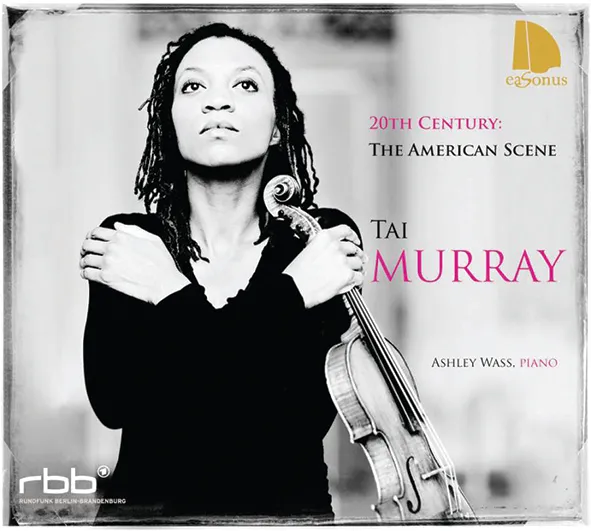
20th Century: American Scene Copland: Violin Sonata; Elliott Carter: 4 Lauds for Solo Violin; Cage: Six Melodies Tai Murray (violin), Ashley Wass (piano) eaSonus EAS 29253
The opening movement of Copland’s Violin Sonata is dominated by a clipped, recitativo style of writing that eschews big, cumulative gestures and can seem inconsequential. With the American violinist Tai Murray, it is anything but that. Her rosined, folksy tone has you listening as though to a genial conversationalist, the soft-spoken piano of Ashley Wass providing apt, satisfying punctuation.
The sparsely textured Lento is sweet-toned, sad, and lingering in Murray’s hands, while the finale’s springy rhythms are delectably supple and elastic. I can’t remember when I last enjoyed a performance of Copland’s Sonata this much, or found so much to delight and stimulate in it.
Elliott Carter’s 4 Lauds for Solo Violin are tougher music, but again Murray’s abilities as a storyteller pin you raptly to the narrative. There’s no hectoring or blowsy rhetoric: Laud 2 (‘Riconoscenza per Goffredo Petrassi’) is a particularly compelling example of Murray’s ability to make telling dynamic and expressive distinctions, without over-emphasis or inflation.
Cage’s Six Melodies find Murray and Wass telepathically tied together in the music’s metrically tricksy patterns, and sympathetically attuned to its meditative, non-self-aggrandising ethos.
If the Corigliano Sonata makes less impact, that’s mainly because it’s a harder work to connect with emotionally, for all the intense rhapsodising Murray brings to the Lento, and the sparks she strikes with Wass in the spiky, energetic finale. Still, this recital – first released in 2013, and now available in the UK – as a whole (with excellent liner notes by Carmen Romero) undoubtedly confirms Tai Murray’s reputation as a violinist to keep a close eye on.
Terry Blain
